
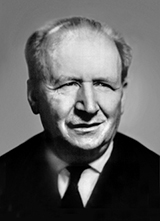
SERHIY F. BESYEDIN
(25.VIII.1901 — 22.VII.1996)
Easel painting artist, artist-graphic,
renowned educator. Professor (1960).
Honoured Artist of Ukraine (1970).
Rector of Kharkiv State Art Institute
(1944-1948).
Head of the Department of Drawing (1948-1960). Head of the Department of Painting (1960-1991).
Serhiy F. Besyedin was born on 25 September 1901 in Kharkiv to a family of a worker.
In 1910 he entered a three-year elementary school named after O. S. Pushkin which he finished with honours. At school his first teacher of Drawing was O.S. Novykov.
From 1913 till 1916 he studied at Kharkiv Craft College.
In 1923 the executive board of the Union of Chemists sent S. Besyedin to study at Kharkiv Art Technical School. Besyedin went to enter the Technical School with the recommendation from Prokhorov who was his teacher.
From 1923 till 1929 Besyedin studied at Kharkiv Art Technical School. First his teachers were professors S. Prokhorov and O. Kokel, later – professor M. Sharonov. In late 1920s-early 1930s he was a member of the Association of Modern Artists of Ukraine and Free Academy of Proletarian Literature.
In 1929 after a successful defense of his thesis work (painting called Football) Besyedin got a specialisation of a painter and was offered to work at the Institute as a lecturer. Thus, he gave classes of Drawing, Painting, and Composition.
From 1933 till 1938 he was taking an active part in creating the Union of Soviet Artists.
In 1935 he got a degree of an associate professor.
From 1938 till 1941 he worked as an assistant at the personal creative workshop of the academician M.S. Samokish. Those years Besyedin created one of his best paintings which is M. Samokish’s portrait.
From 1938 till 1946 he headed Kharkiv Organisation of Union of Artists of Ukraine. He also was a member of the board of the Union of Artists of Ukraine (except years 1941-1943).
In August 1941 along with other artists he was evacuated to Kazakhstan, first to the village Talgar, then – to Alma-Ata where he worked at a local Art Foundation. A bit later he was appointed Director and lecturer of Kazakhstan Theatre and Art College. At that period of life S. Besyedin created a number of paintings about war, namely Panfilov’s division is going to the front line, Battle, graphic suite which contains 12 papers The 8th Guard division named after general Panfilov and others.
In late 1943 when Kharkiv was liberated from fascists, he returned to the city he was born in and began working as a lecturer at Kharkiv State Art Institute. Being in his native city, he created a large panel picture Ukraine is free.
From May 1944 till 1948 he was acting professor; Rector of KhSAI till 1948 and Director of KhAC till summer 1944.
From 1948 till 1960 he was the Head of the Department of Drawing.
From 1960 till 1991 he was the Head of the Department of Painting.
In 1960 he joined the Communist party of Soviet Union and got an academic degree of a professor.
In 1970 he was awarded a title Honoured Artist of Ukraine.
In 1971 his first personal exhibition took place in Kharkiv.
During 1992-1993 he worked as a consultant at the Department of Painting.
In spring 1996 his second personal exhibition took place in Kharkiv.
On 22 July 1996 S.F. Besyedin died at the age of 95. He was buried in Kharkiv.
The most famous paintings by S. Besyedin are portraits, namely Portrait of T. Makarov, a participant of battles for Perekop (1936), Portrait of academician M. Samokish (1939), Portrait of artist M. Ashikhman (1946), Portrait of M. Kropyvnytsky (1949), Portrait of Lyusya Shevkanovtseva (1950), A female’s portrait (1953), Lilac (1955), A woman farmer (1959), and drawings, lithographic pictures, and etchings such as Kharkiv (1941), Self-portrait (1942), Girlfriends (1956), Portrait of an old man wearing glasses (1958), Portrait of a young female communist (1958), Portrait of Makarevych (1963), Landscape (1963), Self-portrait (1970), Portrait of O. Budnyk (1984) and many others.
S. Besyedin’s paintings are exhibited in many museums and private collections of Ukraine.

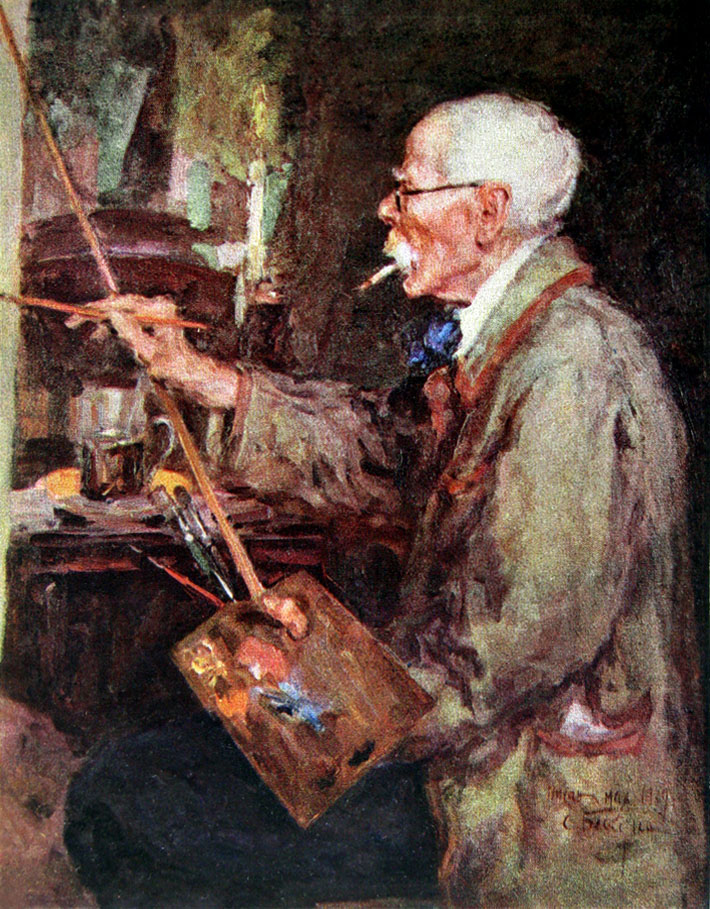
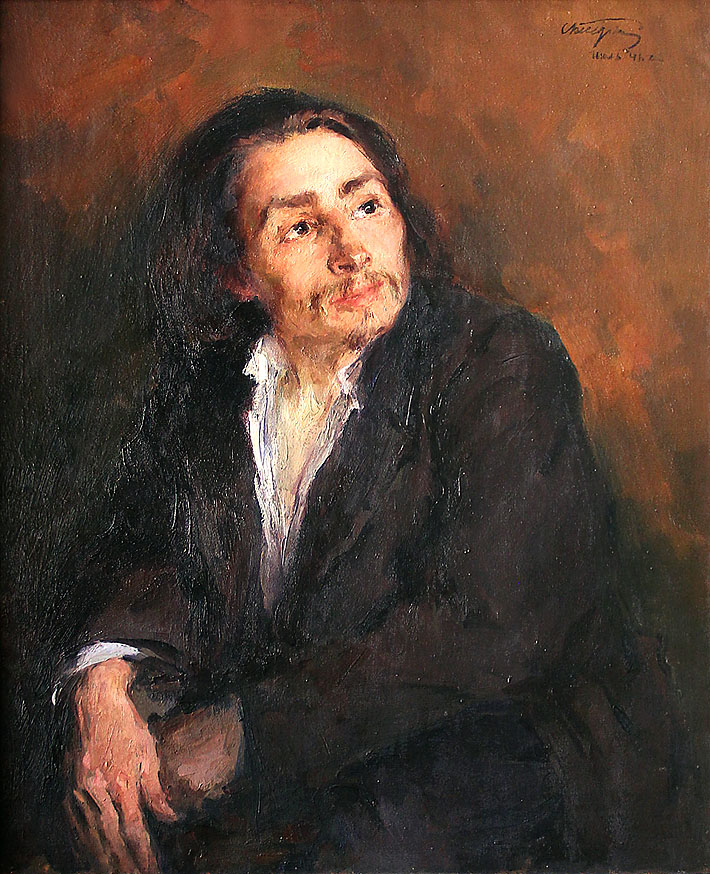

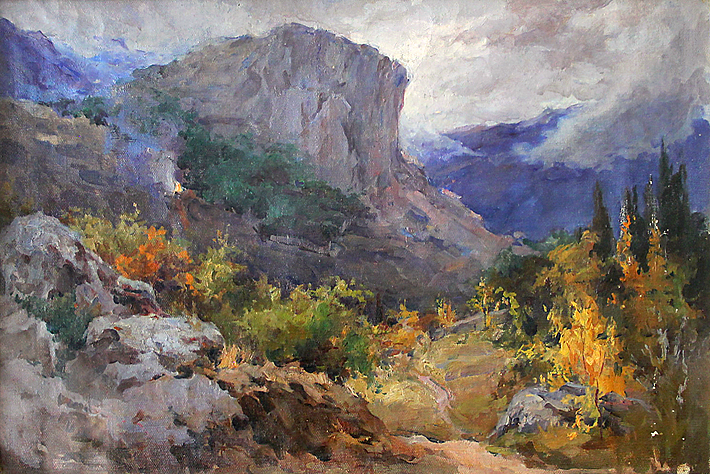
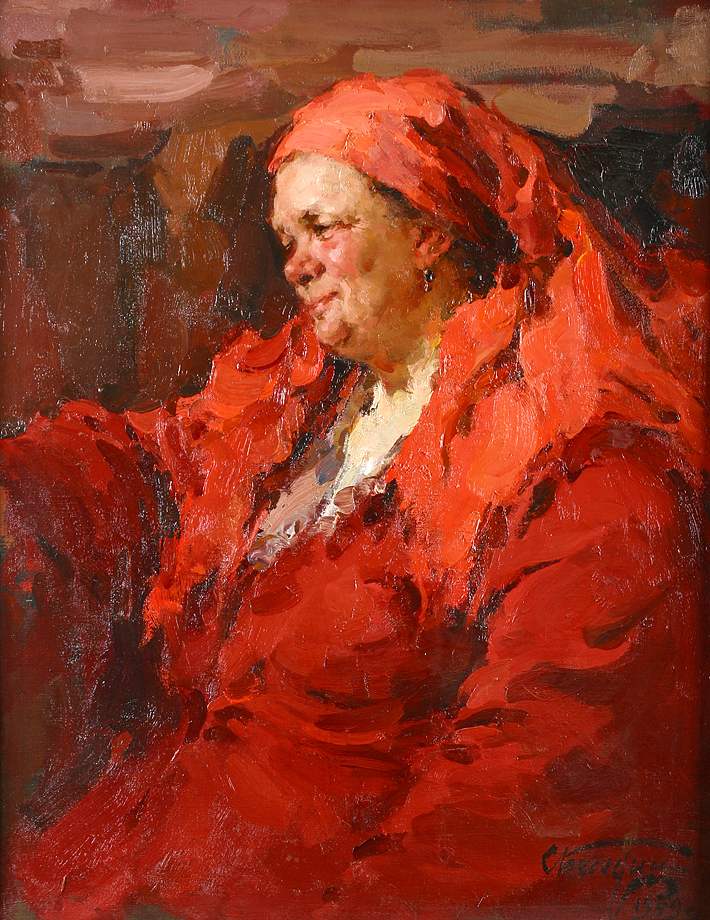
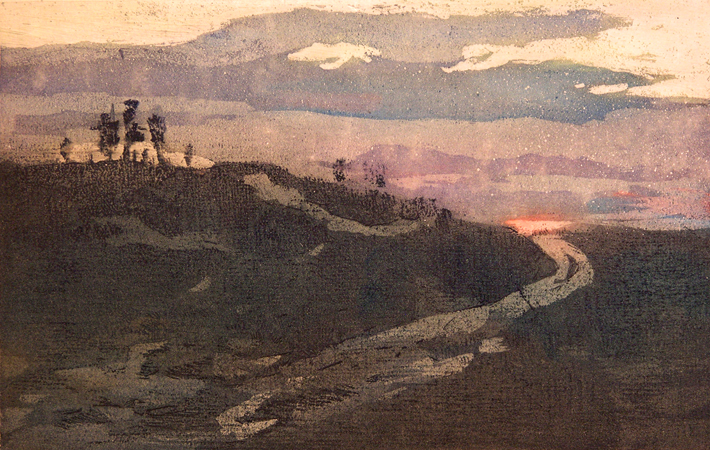
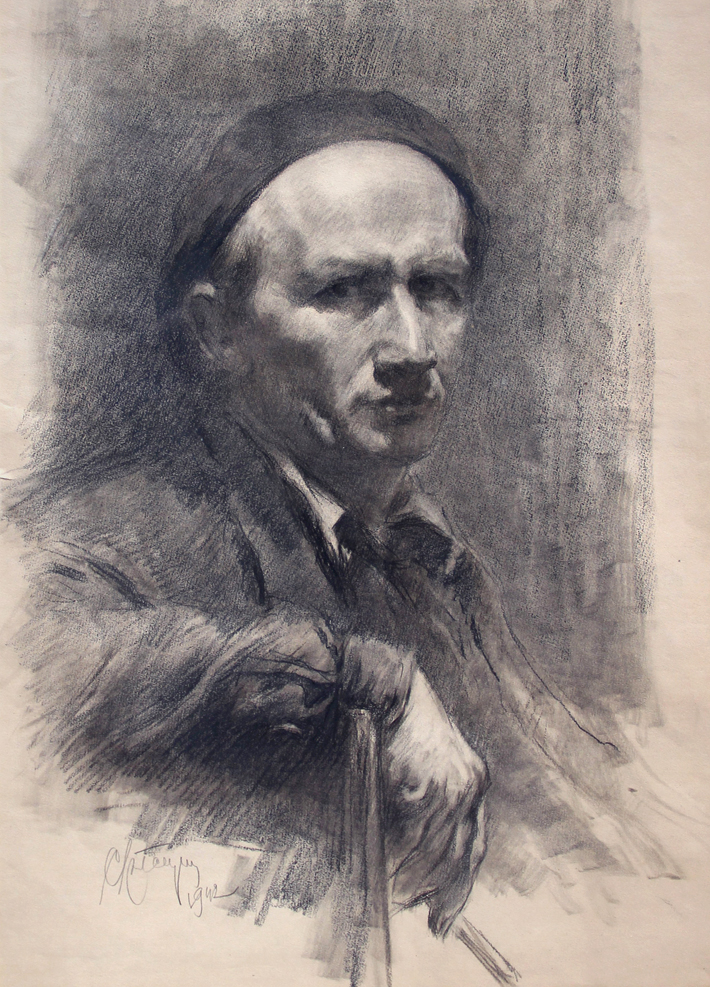
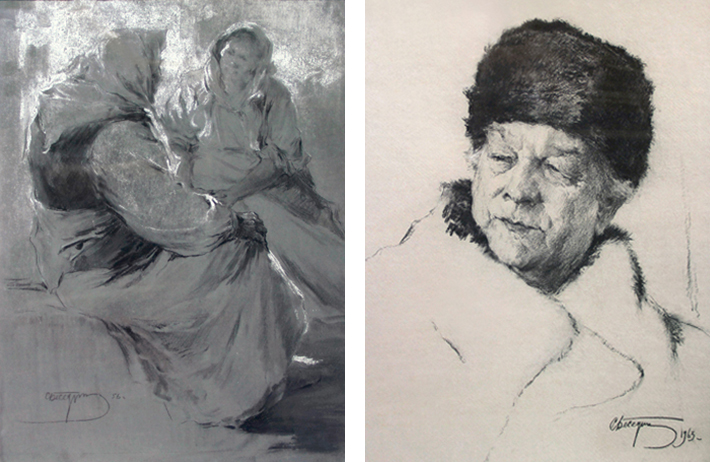
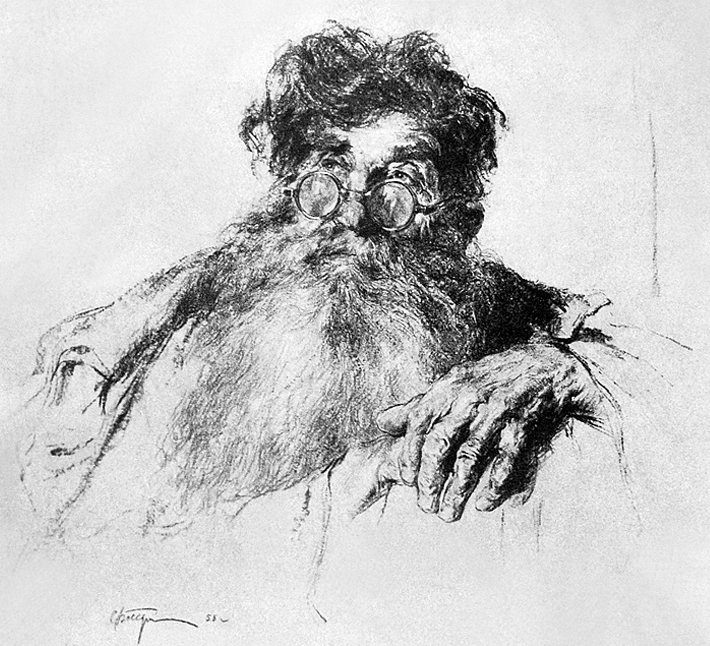



























 Academic Council
Academic Council


